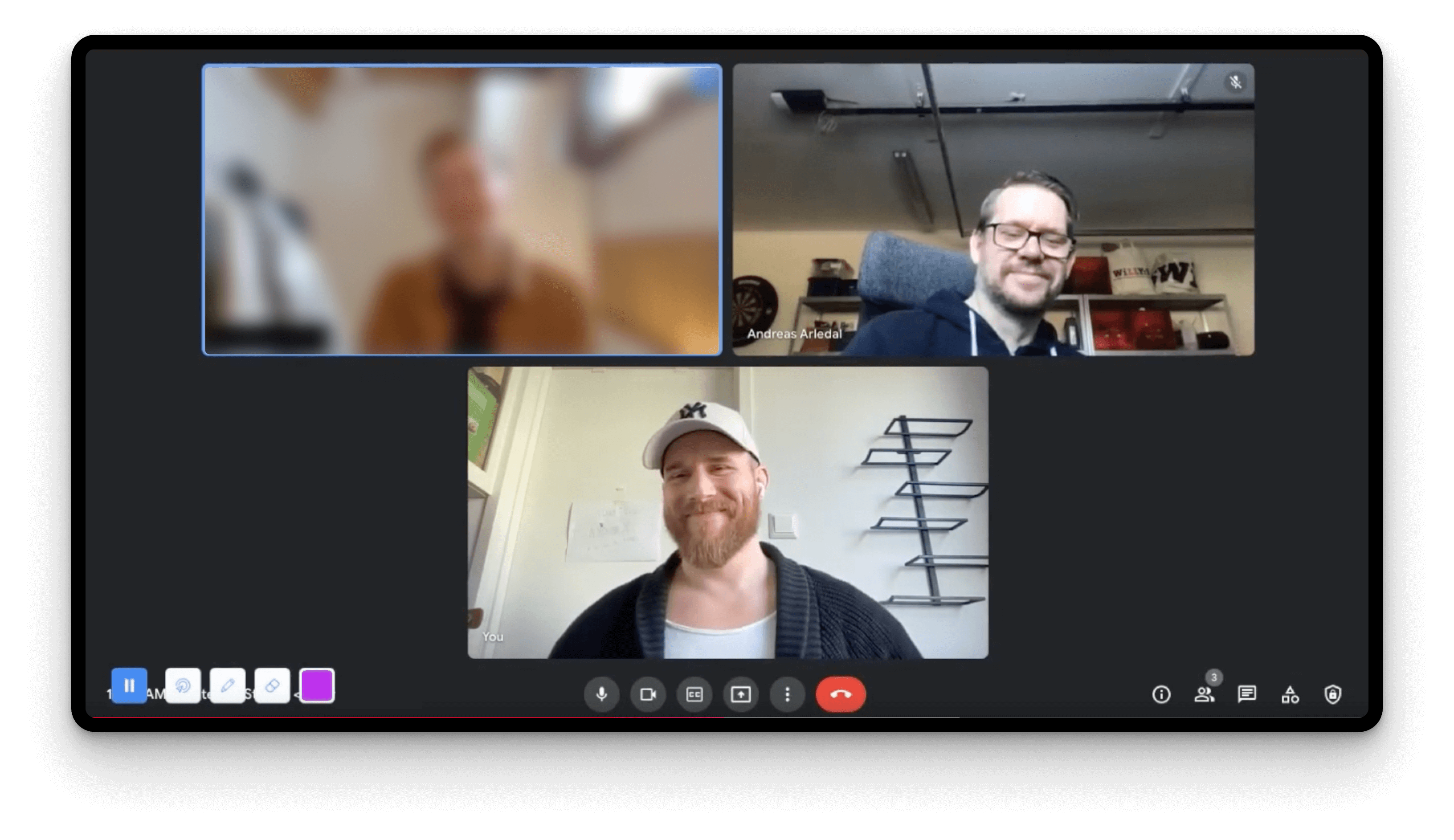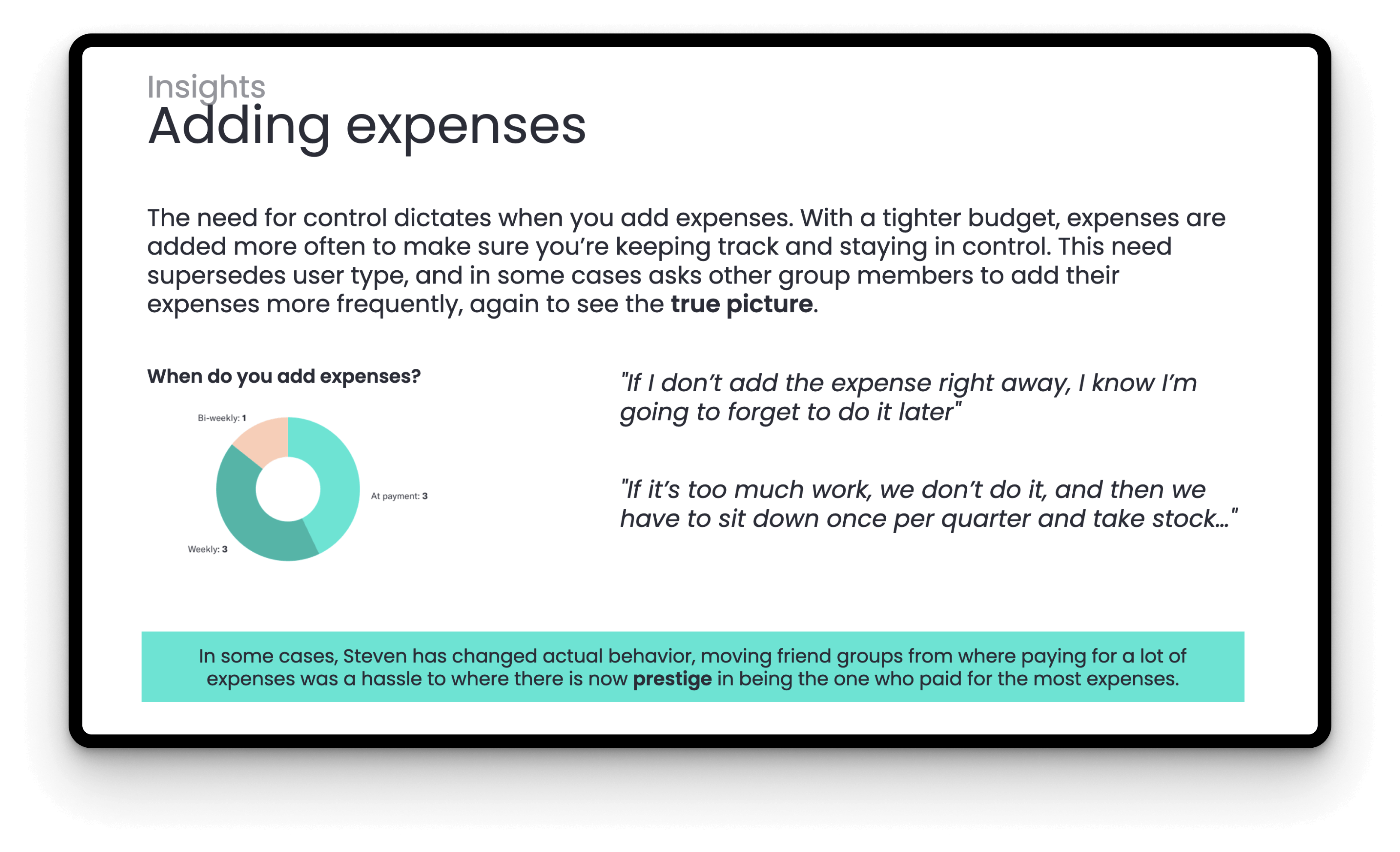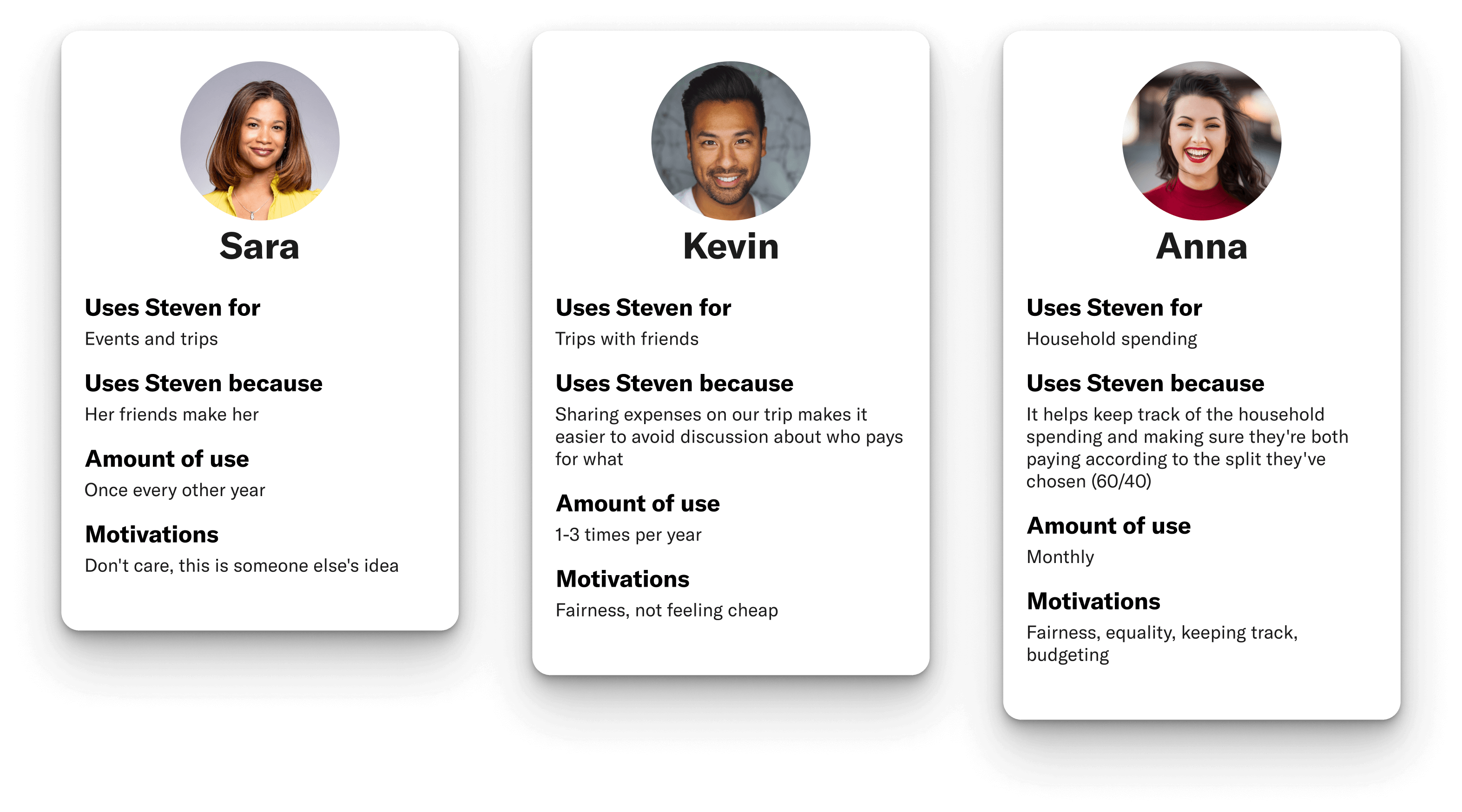Building Research Ops at Steven
From zero to 'users on tap' – establishing scalable, compliant research practices to drive empathy and product strategy.
Background
Steven had a well-designed and well-liked product – but no research pipeline. We weren't doing user discovery, we weren't validating ideas, and we weren't talking to the people using our product. As Head of Experience, part of my mandate was to change that.
Our CTO/CPO, Andreas Arledal, specifically asked me to establish a user research practice. We didn't have the budget for agencies or panels, so we had to build something sustainable in-house – fast, lean, and scalable.
Recruitment: building a pipeline
The biggest blocker was access to users. I worked with our customer support team to make recruitment part of their workflow, writing a short script and instructing agents to offer interviews when appropriate. For scheduling, I used a calendar system that allowed users to book directly – no back and forth required.
Depending on our needs, recruitment could scale up or simmer quietly in the background, building a pool over time. With this in place, we had users available for discovery, validation, and continuous feedback. From novices to power users – we had access.

Structured, compliant, human
I set up a GDPR-compliant research workflow using Notion and Google Drive. Each participant signed a pre-interview form covering consent, internal use, and retention limits. Files were anonymised and securely stored. I tracked signoffs, project linkage, and deletion timelines using a private Notion database.
Compliance was only half the work. The real power came from empathy. I conducted interviews over video, always with a colleague present – from C-level to engineering. They observed and took notes. This wasn't just about insights – it was about seeing the people behind the numbers.
Synthesis and impact
All interviews were synthesised into key takeaways, themes, and strategic insights. I created presentations for major projects, including video clips with subtitles for our international team. These weren't just decks – they were empathy tools.
The research became foundational. It informed our personas, guided copywriting, and shaped our product strategy. A recurring theme across users was the need to "keep track" – of spending, of bills, of feeling secure. That insight became a compass for how we positioned and built features.
Culture change
Inviting stakeholders into interviews changed how we talked about users. We stopped saying "the user" and started talking about real people. It challenged assumptions and humbled the team in the best way. Even when proven wrong, colleagues left interviews feeling energized.
Over time, user insights became part of our investor decks and all-hands updates. What started as a side initiative became central to how we built and talked about Steven.
-
Sustainable recruitment pipeline
Built a scalable user recruitment system through customer support integration, enabling continuous access to diverse user groups.
-
GDPR-compliant framework
Established secure, compliant research operations with structured consent, data management, and retention protocols.
-
Empathy-driven culture
Transformed company culture by involving stakeholders in research sessions, shifting from abstract 'users' to real people.
-
Strategic impact
Research insights directly shaped product strategy, feature development, and company messaging.


